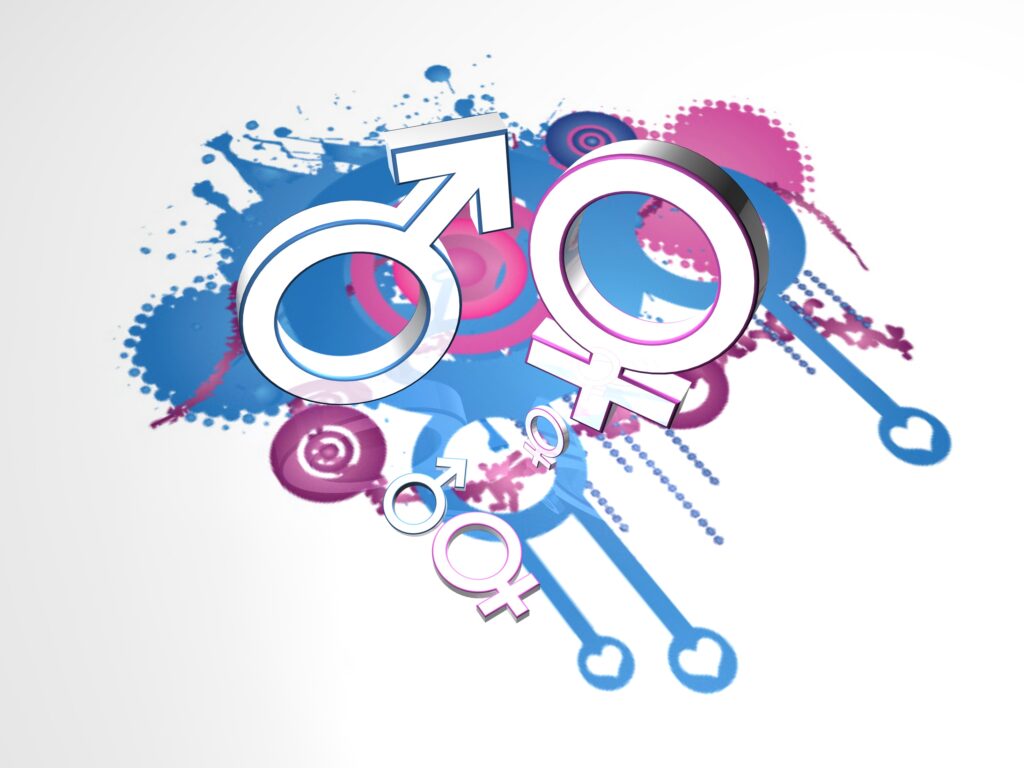Continuing our series on diversity training, Berkeley Wilde explores the issues in training on gender and sexuality identity.
I came out as a gay man when I was age fifteen in the mid 1980’s. At the time, it was illegal for me to have a relationship with another man until I reached the age of 21. This inequality – the age of consent for heterosexual people was 16 – inspired me to become an activist and campaigner to challenge the anti-gay laws and rhetoric prevalent throughout society.
When I began delivering training on gender and sexuality identity in the early 1990s there were still many acts of legislation which were discriminatory towards the lesbian, gay, bisexual and trans (LGBT) communities in the UK. Since the mid 1990’s, thankfully, most of this legislation has since been repealed and replaced with positive legislation such as hate crime laws protecting LGBT people from hate crime, and the Civil Partnerships Act (2004) giving same-sex couples the same rights and protections as married couples.
Wading through the legislation
However, there is still work to be done. Whilst the Civil Partnership Act is a step forward, it is not complete equality, and is different from marriage, treating gay and straight people differently. Successive Home Secretaries have given visas and work permits to reggae singers who incite the murder of gay people. Such incitement is a serious criminal offence. The Equality Bill in the current parliament denies lesbian and gay people protection against harassment. (Tatchell. 2009). The census in 2011 does not include fields relating to sexuality such as “lesbian”, “gay”, “bisexual” or “trans”. In recent research carried out by Minotaur Communications for a local authority the overwhelming majority of respondents, 82%, said they were happy to be asked questions monitoring sexuality, especially if it helps to improve access to services. (Wilde. 2009).
"97% of young gay people in school regularly hear derogatory remarks such as “dyke” or “poof”, 65% experience homophobic bullying at school – 30% of which is from adults, and 17% including death threats."
Legislation has always played a large part in training on gender and sexuality. When I began delivering training many people, especially those in local government, thought the training contravened Section 28 of the Local Government Act (1989), whereby a Local Authority could not: “intentionally promote homosexuality or promote the teaching in schools of the acceptability of homosexuality as a pretend family relationship.”
Fortunately, the Act was repealed in 2003, and no prosecutions were ever brought. Whilst many people in local government thought the Act prevented them from even discussing issues about gender and sexuality identity, this was never the case. No cases were ever brought and there was no case law, and whilst detrimental to LGBT community development (many LGBT community groups had funding cuts or were refused grant funds) the Act was ironically the biggest promotion of homosexuality in the history of the UK’s LGBT communities. It gave rise to organisations such as Stonewall and OutRage! who have since successfully campaigned for equal treatment of LGBT people both in the UK and throughout the world. The age of consent for gay men was made equal at age 16 in 2001 in the UK under the Sexual Offences (Amendment) Act.
"Equality and diversity training is about changing hearts and minds – when it comes from the heart, the lived experience, the impact is profound and makes real change happen for the benefit of all."
Today in Iran, Mauritania, Saudi Arabia, Sudan and Yemen, as well as in parts of Nigeria and Somalia same-sex couples are punished with the death penalty. An additional 72 countries throughout the world punish same-sex couples with imprisonment. In many countries throughout the world I could be writing this article from prison, or indeed in fear for my life, simply for being in a relationship with another man.
Mind your language
After overcoming the legal issues in the training sessions I usually move onto language. This is a very complex issue unpicking terminology such as “homophobia” and “heterosexism”, getting people to work in small groups to deconstruct the language and come up with their own working definitions. The groups usually come up with a consensus, and over the years I have used these working definitions:
- Homophobia: Results in lesbian, gay and bisexual people experiencing hatred, discrimination or inequality.
- Heterosexism: The belief that heterosexuality is the only “natural” and “normal” expression of sexuality, and it is inherently superior (and healthier) to other types of sexuality.
This is followed with a language exercise asking groups to come up with positive and negative language describing LGBT people. A range of words is drawn up and then we identify best practice, simply using “Lesbian”, “Gay”, “Bisexual” and “Trans” as descriptors. Whilst this isn’t a cover all, I explain the best way to support a client or service user, when uncertain about the language to use, is to listen for the language the client uses themselves, or when in doubt, simply ask!
Drawing on personal experience
One of the most impactful learning methods has been personal biography. When training with a group of secondary school teachers, having a panel of young LGBT people speaking about their direct experiences in schools has the most impact upon the teachers. From the training evaluation this was the most useful tool for teachers in going back into schools and making changes. When you consider 97% of young gay people in school regularly hear derogatory remarks such as “dyke” or “poof”, and 65% of young gay people experience homophobic bullying at school, 30% of which is from adults, and 17% including death threats, urgent action is required. (Hunt & Jensen. 2007).
In a study of young gay people in Edinburgh in 2003, 58% felt their life wasn’t worth living, and 28% deliberately self harmed, compared with 2% in the general population. (Hutchison et al. 2003). Training teachers to overcome homophobic bullying in schools is therefore vitally important.
Having an evidence base is crucial in delivering good quality equality and diversity training. You will be presented with many challenges, often with a tough audience. It is essential to stay professional, and to always back up what you are saying with evidence.
Both evidence and personal biography are powerful tools in equality and diversity training. At Minotaur Communications our trainers are involved in research and delivering training based on their own lived experience. This keeps the issues live and real for participants. Equality and diversity training is about changing hearts and minds, and when training comes from the heart, the lived experience, the impact is profound and makes real change happen for the benefit of all.
Berkley Wilde is a human rights campaigner and an equality and diversity researcher and trainer. He heads up the management consultancy Minotaur Communications . For more information on gender and sexuality research and training please visit the website. You can also follow Berkeley on Twitter.
Continuing our series on diversity training, Berkeley Wilde explores the issues in training on gender and sexuality identity.
I came out as a gay man when I was age fifteen in the mid 1980’s. At the time, it was illegal for me to have a relationship with another man until I reached the age of 21. This inequality - the age of consent for heterosexual people was 16 - inspired me to become an activist and campaigner to challenge the anti-gay laws and rhetoric prevalent throughout society.
When I began delivering training on gender and sexuality identity in the early 1990s there were still many acts of legislation which were discriminatory towards the lesbian, gay, bisexual and trans (LGBT) communities in the UK. Since the mid 1990’s, thankfully, most of this legislation has since been repealed and replaced with positive legislation such as hate crime laws protecting LGBT people from hate crime, and the Civil Partnerships Act (2004) giving same-sex couples the same rights and protections as married couples.
Wading through the legislation
However, there is still work to be done. Whilst the Civil Partnership Act is a step forward, it is not complete equality, and is different from marriage, treating gay and straight people differently. Successive Home Secretaries have given visas and work permits to reggae singers who incite the murder of gay people. Such incitement is a serious criminal offence. The Equality Bill in the current parliament denies lesbian and gay people protection against harassment. (Tatchell. 2009). The census in 2011 does not include fields relating to sexuality such as “lesbian”, “gay”, “bisexual” or “trans”. In recent research carried out by Minotaur Communications for a local authority the overwhelming majority of respondents, 82%, said they were happy to be asked questions monitoring sexuality, especially if it helps to improve access to services. (Wilde. 2009).
"97% of young gay people in school regularly hear derogatory remarks such as “dyke” or “poof”, 65% experience homophobic bullying at school - 30% of which is from adults, and 17% including death threats."
Legislation has always played a large part in training on gender and sexuality. When I began delivering training many people, especially those in local government, thought the training contravened Section 28 of the Local Government Act (1989), whereby a Local Authority could not: “intentionally promote homosexuality or promote the teaching in schools of the acceptability of homosexuality as a pretend family relationship.”
Fortunately, the Act was repealed in 2003, and no prosecutions were ever brought. Whilst many people in local government thought the Act prevented them from even discussing issues about gender and sexuality identity, this was never the case. No cases were ever brought and there was no case law, and whilst detrimental to LGBT community development (many LGBT community groups had funding cuts or were refused grant funds) the Act was ironically the biggest promotion of homosexuality in the history of the UK’s LGBT communities. It gave rise to organisations such as Stonewall and OutRage! who have since successfully campaigned for equal treatment of LGBT people both in the UK and throughout the world. The age of consent for gay men was made equal at age 16 in 2001 in the UK under the Sexual Offences (Amendment) Act.
"Equality and diversity training is about changing hearts and minds - when it comes from the heart, the lived experience, the impact is profound and makes real change happen for the benefit of all."
Today in Iran, Mauritania, Saudi Arabia, Sudan and Yemen, as well as in parts of Nigeria and Somalia same-sex couples are punished with the death penalty. An additional 72 countries throughout the world punish same-sex couples with imprisonment. In many countries throughout the world I could be writing this article from prison, or indeed in fear for my life, simply for being in a relationship with another man.
Mind your language
After overcoming the legal issues in the training sessions I usually move onto language. This is a very complex issue unpicking terminology such as “homophobia” and “heterosexism”, getting people to work in small groups to deconstruct the language and come up with their own working definitions. The groups usually come up with a consensus, and over the years I have used these working definitions:
- Homophobia: Results in lesbian, gay and bisexual people experiencing hatred, discrimination or inequality.
- Heterosexism: The belief that heterosexuality is the only “natural” and “normal” expression of sexuality, and it is inherently superior (and healthier) to other types of sexuality.
This is followed with a language exercise asking groups to come up with positive and negative language describing LGBT people. A range of words is drawn up and then we identify best practice, simply using “Lesbian”, “Gay”, “Bisexual” and “Trans” as descriptors. Whilst this isn’t a cover all, I explain the best way to support a client or service user, when uncertain about the language to use, is to listen for the language the client uses themselves, or when in doubt, simply ask!
Drawing on personal experience
One of the most impactful learning methods has been personal biography. When training with a group of secondary school teachers, having a panel of young LGBT people speaking about their direct experiences in schools has the most impact upon the teachers. From the training evaluation this was the most useful tool for teachers in going back into schools and making changes. When you consider 97% of young gay people in school regularly hear derogatory remarks such as “dyke” or “poof”, and 65% of young gay people experience homophobic bullying at school, 30% of which is from adults, and 17% including death threats, urgent action is required. (Hunt & Jensen. 2007).
In a study of young gay people in Edinburgh in 2003, 58% felt their life wasn’t worth living, and 28% deliberately self harmed, compared with 2% in the general population. (Hutchison et al. 2003). Training teachers to overcome homophobic bullying in schools is therefore vitally important.
Having an evidence base is crucial in delivering good quality equality and diversity training. You will be presented with many challenges, often with a tough audience. It is essential to stay professional, and to always back up what you are saying with evidence.
Both evidence and personal biography are powerful tools in equality and diversity training. At Minotaur Communications our trainers are involved in research and delivering training based on their own lived experience. This keeps the issues live and real for participants. Equality and diversity training is about changing hearts and minds, and when training comes from the heart, the lived experience, the impact is profound and makes real change happen for the benefit of all.
Berkley Wilde is a human rights campaigner and an equality and diversity researcher and trainer. He heads up the management consultancy Minotaur Communications . For more information on gender and sexuality research and training please visit the website. You can also follow Berkeley on Twitter.







